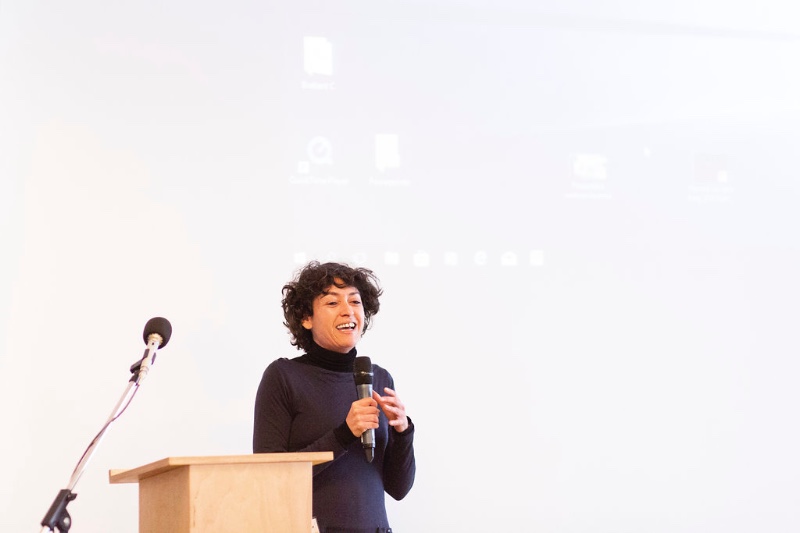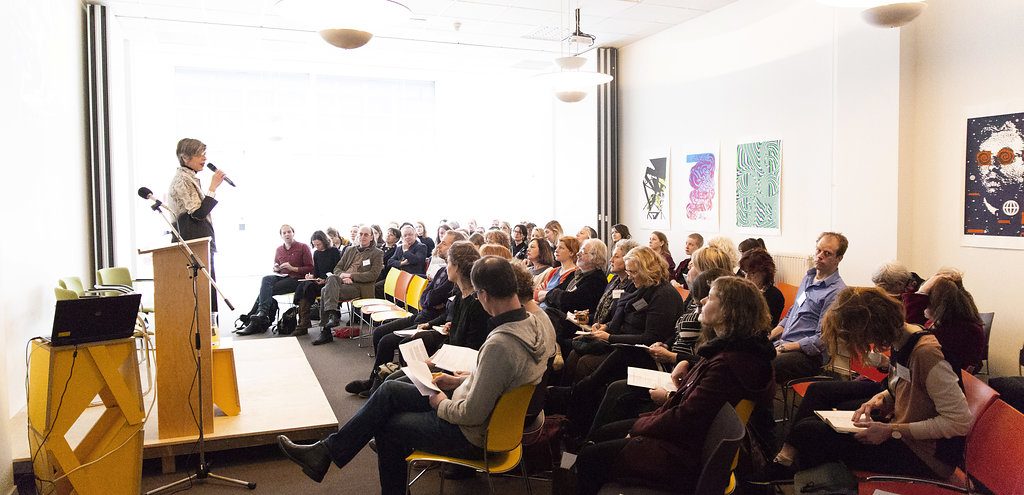
Not everyone is familiar with the artist-in-residence phenomenon. What do these entail? How can you find them, and what does it mean for you as an artist to participate in them? TransArtists, founded in 1997, is a knowledge centre for information about artist-in-residence programmes (AIR) located in the Netherlands, but also worldwide. In addition to facilitating information, TransArtists also analyse the developments surrounding the AIRs, such as their increasing popularity and the position they occupy not only in the arts, but also with regard to social frameworks. To that end, Dutch Culture | TransArtists organise a series of symposia which, thanks to its continuity, responds to the changing aspects of artists’ residencies.
It is important that artists have places where they can exhibit and produce work, but also where they have the space to experiment and reflect. AIR programmes furnish a calm environment as well as the necessary contacts via their national and international networks. The mutual diversity and the (potentially) measurable effects of such organisations were further highlighted during AIR for Experiment (the first symposium being held in Delft, 2016). In this first meeting, the organisational model and its intrinsic core function: creating space for experimentation, for AIRs and for art initiatives, are all considered in greater detail.
A general conclusion to emerge from this symposium is that, although the value of these idiosyncratic initiatives has been proven in the circuit, they are still encountering resistance from funding sources and governments. A contradiction arises from the fact that the initiatives that involve AIR programmes require financial support, which requires a certain structure and bureaucracy that then places them in competition with larger and more presentation-oriented organisations. It is precisely the agile approach, the small scale and the experimental structures for production and presentation within the context of artistic practice that make these AIRs interesting in the first place. Which means that there is not yet a common model within the current financing structures to formalise this enthusiasm into a verifiable fact.

What has changed within the last two years? The Working on the margins working conference, which took place on 29 March 2018 at bkkc (now Kunstloc) in Tilburg, focused on the situation of AIR programmes in North Brabant, relating them to international perspectives. The organisational issues and financing, as explained earlier in Delft, have not changed — read ‘improved’, but what is striking is that the discussion, particularly in Brabant, has shifted to substantive aspects like reciprocity and visibility in order to determine one’s own position. in anticipation of her essay Performing the Margins, art historian Mariska van den Berg meticulously explained that, although the working method and the organisation of AIRs do differ, nearly all AIR programmes are aware of aspects like reciprocity, being part of the art ecosystem and the artist’s ability to focus on his or her own work. Aspects that by no means evade interaction with the social sphere, but that do naturally establish relationships with the environment.
Report-Work Conference-Working-on-the-Margins Download
The panel discussion highlighted these aspects from different positions, namely policy (Marcelle Hendrickx, councillor of Tilburg), financing (Mayke Jongsma, Mondriaan Fund) and the professional field (Bas van den Hurk, Leo XIII). ‘This means that a tension exists between generating visibility and safeguarding time and calmness for [artists’] concentration, which is necessary to develop new forms of work.’
But what is the meaning of the margin where the AIRs are located? Expanded curator Yasmina Reggad saw this as nearly a physical matter. You determine your own position and then, based on this positioning, you can consider how, as a ‘small’ organisation, you relate to the whole of the arts field. She illustrated this insight with, in her own words: ‘a sheet of printed paper where the margin is used to make notes and to comment. This also clarifies the position of AIRs as a place where there is still room for creativity, thoughts and experiment, before it is rendered to be exposed to the outside world.’
This also requires the anticipation of the art institute’s changing role in relation to current social developments. Evi Swinnen, from Timelab Ghent, provided insight into their approach to revising traditional forms of work in the arts and transforming their AIR programme into a cooperative society. The interest of the individual, therefore, is related to a larger whole in order to arrive at new forms of work that even lead to new forms of financing. ‘We have to step out of our controlled thinking and develop a new vocabulary to realise a new way of working in art. That does not exclude subsidies, but it should not be an obstacle to thinking critically about what reciprocity means. Determine your own definition of performance. A call to activism!”
Therefore, it is no coincidence that a movement has recently emerged in North Brabant to craft a network from the many AIR programmes on offer in the province. Here, organisations big and small experience the same problem; namely, that their efforts have little resonance with policymakers. After all, the artist-in-residence programmes are not public favourites and cannot be defined in that context. Their audience reach is deferred, often being reserved instead for organisations and institutions that focus more on presentation. A small group of these AIRs (De Fabriek and TAC Eindhoven, Van Gogh Artist in Residence Zundert and Witte Rook Breda), took the initiative to form a network that would break this vicious circle and to create the definitions that would establish the dialogue to engage with both politics and policy. With support from sundaymorning@ekwc, Daglicht and Beeldenstorm, Leo XIII, Het Atlas Initiatief, Baltan Laboratories, Annatopia/Boshut, Ecodorp Boekel and the SeaFoundation, AIR network Brabant strives for knowledge sharing, visibility and appreciation for their share of the Brabant art ecosystem.
‘Driven by adventure and, often, by the need to cherish a special but vulnerable position. This calls for agility, ingenuity and contrariness, and this is where the potential for new aesthetic and social practices in art and society lurk.’
Heidi Vogels DutchCulture | TransArtists
Author: Esther van Rosmalen

